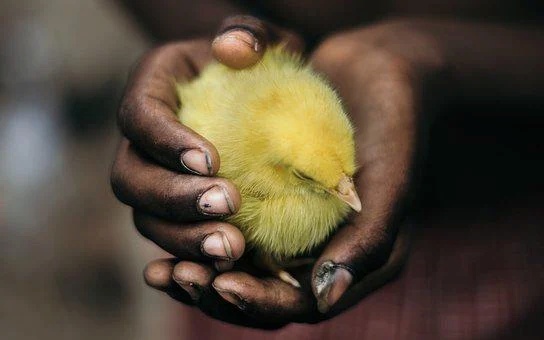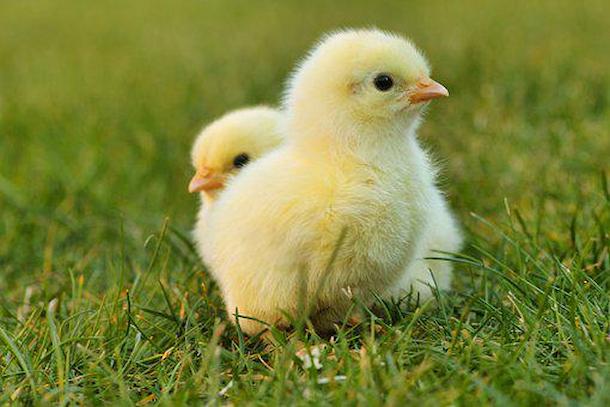The cutest animals are baby hens. You can smile just by holding them, watching them, or hearing them chirp. You do need to be aware of a few requirements for chicks, though. Temperature is one of a chick’s main needs, in addition to food and water.
For the first five to seven weeks, the ideal temperature for chicks must be monitored and adjusted as they get older. After that, they will have enough feathers to independently control their body temperature.
So how warm should a baby chicken be kept?
During their first week, you should make sure that your chicks are kept at a temperature of about 95°F (35°C). Up until they are prepared to leave the brooder, the temperature can be lowered by 5°F each week.
How can you make sure your baby chickens have enough heat? Is it possible to tell whether a chick is cold or hot? Continue reading.
Table of Contents
Temperature Requirement Of Chicks
Why do chickens and other birds require a second heat source if they have a warm blooded constitution? There are actually two explanations.
The first reason is that even though chickens are warm-blooded, their body needs time to develop the ability to produce enough heat.
Second, the majority of chickens raised today are crossbreeds, which are less resilient than older, original species and may require additional care.
A chick’s metabolism and internal functions are developing during the first week of life and necessitate heat that their body is unable to provide yet.
For this reason, during their first week of life, chicks require a constant temperature of 90–95°F (35–38°C).
Chicks become less dependent on external heat sources as they grow older and develop their bodies. The temperature required drops over time for this reason.
The first step in keeping your chicks healthy is to make sure they have a temperature that is appropriate. Let’s talk about how you can deliver this heat to them now.
How To Properly Heat Chicks

How should I heat my chickens correctly? It is a very common practice to use a brooder, which is a contained space that can be heated and maintained.
Many people use a heat lamp in their brooder. However, because they consume a lot of electricity and pose a fire hazard, some people might prefer not to use heat lamps.
Following are several suggestions for you, whether or not you decide to use a heat lamp:
With A Heat Lamp
Decide On The Number Of Lamps
Some people use a single heat lamp that produces a lot of heat, while others opt to use several lamps that produce less heat.
One benefit of having multiple lamps is that your chicks can use one while you are away from home or if one breaks down at night.
On the other hand, using a single heat lamp may be simpler to control.
Pay Close Attention To The Height Of The Lamp
No matter how hot a lamp may be, if it is too far away from your chicks, it will be useless.
But, a lamp too close to your chicks can also cause harm.
To avoid being either too close or too far away from your chicks, you should properly adjust the lamp’s height.
Place a thermometer on the brooder floor to determine the right height for a particular lamp, and adjust the lamp’s height until the temperature (as determined by looking at the thermometer) is within the range for the chicks’ height.
Location Of The Lamp
It’s important to think about the lamp’s placement. Heat can easily escape through the brooder walls if the lamp is too close to the walls, causing an uneven distribution of temperature inside the brooder. Placing the lamp in the middle of the brooder allows the chicks to regulate how much heat they want.
They can move away from the lamp if it is too warm, while they can move in the opposite direction if it is too cool.
Without A Heat Lamp
There are other ways to heat the chick’s room if you decide against using a heat lamp. These options will work in any season, but keep in mind that you may have to tend the brooder much more often if you are not using heat lamps in cooler climates or in the winter months.
In cold winter weather, extra caution must be used to maintain the temperatures within the range.
Properly Insulate The Brooder
Heat won’t easily escape from the brooder if the outer walls are lined with mylar or another effective insulation material.
Additionally, insulating the brooder will keep your chicks from becoming chilled.
Use Bedding
Whether or not you use lamps, the brooder should always have thick bedding that the chicks can burrow into. Brooders’ bedding options include:
- Towels
- Sawdust
- Straw/hay
- Wood shavings
Newspapers can also be used to line the floor, but their main function is to absorb moisture from the droppings of your chicks rather than to keep them warm.
Heat Up A Rice Sock
To keep your chicks warm, try this fantastic technique.
Rice should be added to a sock, which should then be heated in a microwave or a slow-cooking oven. Place the heated rice sock inside the broiler after that. Chicks seeking additional warmth will approach the sock closely.
Because the rice will eventually cool, this method of keeping chicks warm cannot be used for extended periods of time.
The rice needs to be watched carefully and heated several times.
Give Your Chicks Company—yours And Theirs
Please be kind to your chicks. They will value your presence.
If you can, try to cuddle and play with them. To keep them warm, wrap them in a blanket or towel.
When they are cold, chicks naturally seek out the warmth of one another, so keeping a large enough flock in the brooder will also help them stay warm.
The more people there are, the warmer they can keep each other.
You now have some fantastic ideas for keeping your chicks warm. How can you tell whether they require more or less heat?
How To Tell If Your Chicks Are Too Hot Or Cold
These methods will help you determine whether your chicks are at ease around your heat source.
Pay Close Attention To How Distributed They Are
If your chicks are huddling together in one location, it is likely they are cold. However, you should not automatically assume that they are cold and turn up the heat because they might be huddling because they are afraid of something.
When they remain huddled together, check the brooder’s temperature to see if it is appropriate for their age. Chicks with the appropriate temperature will be distributed equally throughout the brooder.
If So, How Far Are They From The Heat Lamp?
Even if all of your chicks are gathered very close to the heat source, they might still be too cold. You can help by reducing the lamp’s height or by including an additional heat source.
Examine Their Legs
Chicks that are cold have puffed legs with moist skin, while chicks that are too warm typically have legs with thin, dry skin.
To determine whether your chicks are too cold or too hot, carefully examine their legs.
Read More: How Long Can Chickens Go Without Food?
Final Thoughts
In their first week, chicks need a temperature of about 95 degrees Fahrenheit. The temperature should be lowered by 5°F every week until they are ready to leave the brooder.
Remember to keep your chicks warm by using a heat lamp or any of the other suggestions in this article.
To ensure that your chicks are content and healthy, pay attention to their behavior and physical state.
